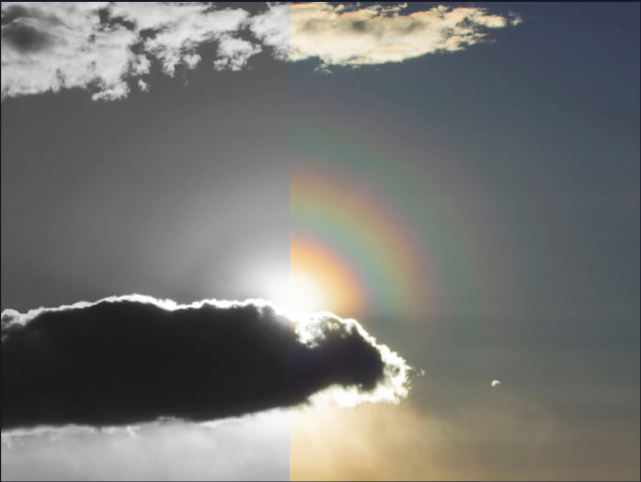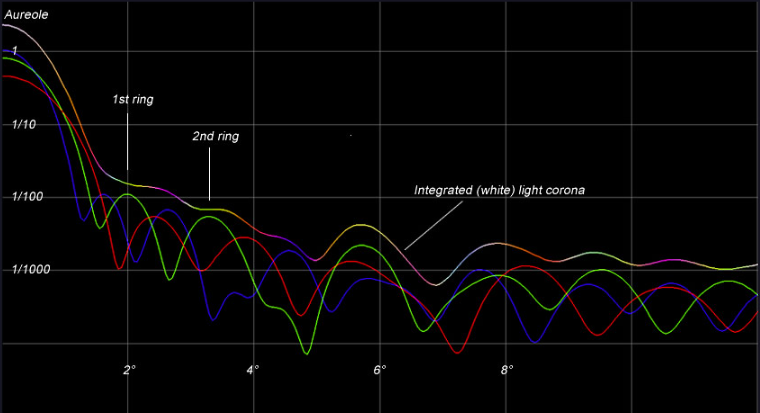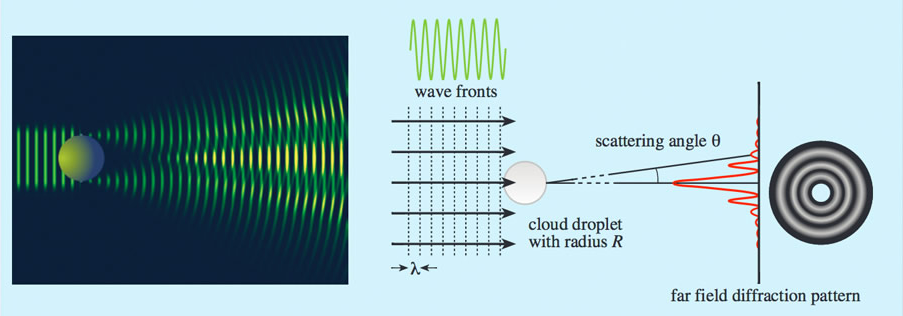Corona ring brightness and colour - OPOD
Corona Ring Brightness and Colour: Exploring the Phenomenon
Coronas are awe-inspiring atmospheric optical phenomena that capture our attention with their vibrant colors and intricate ring patterns. While we often associate coronas with their color variations, the brightness of the rings themselves is a topic worth exploring. In this article, we will delve into the relationship between corona ring brightness and color, shedding light on the intriguing characteristics of this atmospheric spectacle.
Unveiling the Relationship: Colors vs. Brightness
When observing coronal rings, our eyes are captivated by the kaleidoscope of colors they exhibit. Interestingly, the rings themselves are only marginally brighter, if at all, compared to the spaces between them. To illustrate this, let's consider an image captured by Cortney Litwin in Spokane, Washington, USA. By converting half of the image to black and white tones, we can observe how the rings almost disappear, emphasizing the importance of color in our perception of coronas.
Understanding Corona Intensity: A Graphical Insight
To gain a deeper understanding of corona intensity, we turn to a graph that showcases the relationship between intensity and angle for different colors. This graph presents corona intensities versus angle for three colors and their integrated light. By employing accurate Mie scattering calculations using monosized 25-micron diameter water droplets, we can analyze the characteristics of coronas in greater detail.
Here are some key insights from the graph:
- The intensity of green light decreases significantly by 100 times between the central aureole and the first ring. Subsequent rings exhibit slightly lower intensity but still remain prominent. This explains why coronas observed through a green filter reveal well-defined rings.
- Other wavelengths exhibit similar intensity patterns, but their rings appear in different positions.
- The integrated white light corona, on the other hand, lacks well-defined rings. The first and second rings are no more intense than the spaces between them. The visibility of these rings primarily stems from the differences in color rather than brightness.
Intensity Variations: The Paradoxical Phenomenon
Interestingly, larger angles often exhibit greater intensity variations in coronas. However, these variations are rarely observed due to the blurring effect caused by differences in droplet size. While the graph showcases these variations, it's important to note that they may not be readily perceptible in real-life observations.
The Role of Individual Droplets: Unveiling the Mechanism
To understand the formation of coronas, we must delve into the fascinating world of individual water droplets. Each tiny droplet scatters incoming light waves, leading to their overlap and interference, ultimately giving rise to the ringed pattern we observe in coronas.
When examining coronas produced by single isolated droplets, two distinct patterns emerge:
- Near-field pattern: In typical school experiments using water tanks, the near-field pattern is revealed. This pattern showcases the diffraction of light waves as they pass through the droplet, resulting in intricate interference patterns.
- Far-field pattern: In the far field, a different intensity pattern manifests, characterized by circular rings. This pattern occurs due to the superposition and interference of outgoing waves scattered by the droplet.
Conclusion
Corona ring brightness and color are closely intertwined phenomena that contribute to the visual splendor of these atmospheric optical displays. While the rings themselves may not be significantly brighter than the spaces between them, their vibrant colors captivate our attention and give coronas their distinct character. By understanding the intensity variations and the role of individual droplets in producing these patterns, we gain a deeper appreciation for the intricate mechanisms at play in nature's mesmerizing light shows.

Corona ring brightness & colour
A magnificent corona imaged by Cortney Litwin at Spokane, Washington, USA. A rare third ring is faintly visible.

Colours not brightness
We see coronal rings more for their colour variation. The rings are only barely brighter - if at all - than the 'gaps' between them.
At left, half of Cortney's image has been converted to black and white tones. The rings almost disappear.

More about corona intensity.
The graph shows corona intensities versus angle for three colours and for their integrated light. The integrated light curve is coloured to represent hues visible by eye.
Monosized 25 micron diameter water droplets were used in the accurate Mie scattering calculations. The vertical intensity scale is logarithmic.
Look at the green light curve. Its intensity falls by 100X between the central aureole and the first ring. Subsequent rings are less intense but not by much. There is a 10X difference between ring peaks and the troughs between them. A corona in filtered green light (try it someday!) has many well defined rings.
The same is true for other wavelengths but their rings are in different positions.
The corona in integrated white light is far less well defined. The first and second rings are no more intense than the spaces between them. They are only visible because of colour differences.
Paradoxically, at larger angles there are greater intensity variations. However, these would be rarely seen because differences in droplet size usually blur them away.
The graph is based on output from Philip Laven's excellent MiePlot program.

Single isolated droplets each produce a coronal diffraction pattern. Outgoing waves from scattering of the incoming plane wave by the droplet superpose and interfere. Typical school experiments with water tanks reveal the near-field pattern (left). In the far field an intensity pattern with circular rings is produced (right).
Coronae are the result of diffraction by individual tiny water droplets. Each droplet scatters light waves which then overlap and interfere to produce the ringed pattern.
The figure at right is from " Rings around the sun and moon: coronae and diffraction" by Les Cowley, Philip Laven and Michael Vollmer, J. Physics Education, 40 (1) 2005.
Read it here.
Note: this article has been automatically converted from the old site and may not appear as intended. You can find the original article here.
Reference Atmospheric Optics
If you use any of the definitions, information, or data presented on Atmospheric Optics, please copy the link or reference below to properly credit us as the reference source. Thank you!
-
<a href="https://atoptics.co.uk/blog/corona-ring-brightness-and-colour-opod/">Corona ring brightness and colour - OPOD</a>
-
"Corona ring brightness and colour - OPOD". Atmospheric Optics. Accessed on November 26, 2024. https://atoptics.co.uk/blog/corona-ring-brightness-and-colour-opod/.
-
"Corona ring brightness and colour - OPOD". Atmospheric Optics, https://atoptics.co.uk/blog/corona-ring-brightness-and-colour-opod/. Accessed 26 November, 2024
-
Corona ring brightness and colour - OPOD. Atmospheric Optics. Retrieved from https://atoptics.co.uk/blog/corona-ring-brightness-and-colour-opod/.